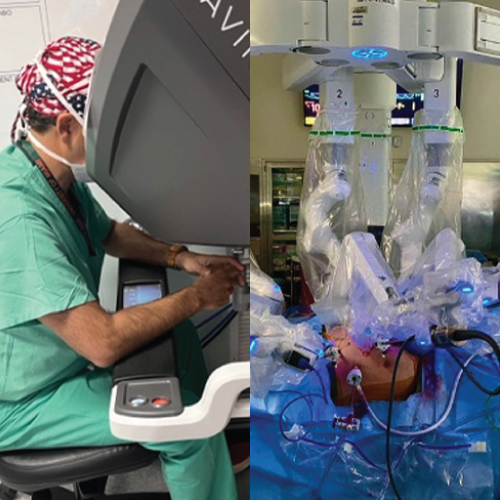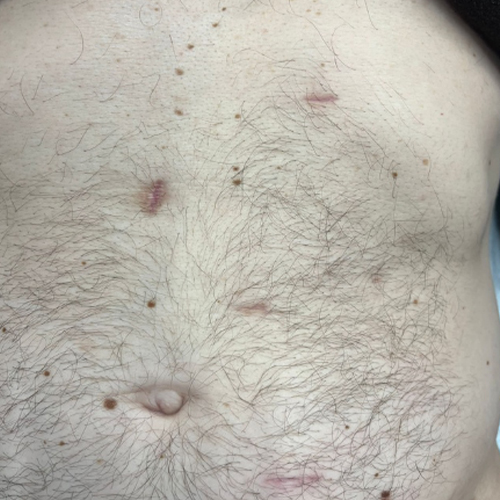Robotic Transplantation
Robotic Surgery for Enhanced Precision, Faster Recovery, and Improved Patient Outcomes.
Robotic transplantation is a new and groundbreaking technique to transplant surgery that proffers numerous advantages over standard transplant surgery. The procedure allows for precise and minimally invasive surgery through cutting-edge robotic technology, leading to a faster recovery and fewer complications.
Traditional transplant surgery demands large incisions, leading to considerable pain, extended hospital stays, and an extended recovery time. In contrast, robotic transplantation involves smaller incisions, decreasing pain, hospital stays, and recovery time. This approach produces a smaller scar, providing a more aesthetically pleasing outcome.
Moreover, robotic transplantation offers improved accuracy and precision, improving patient outcomes. Robotic technology allows for a 3D visualization of the surgical field, enabling surgeons to operate with greater accuracy and precision, resulting in better patient outcomes.
This advantage can be particularly seen in kidney transplantation, a medical technique that involves transplanting a healthy kidney from a donor into a patient with kidney failure. This procedure was commonly conducted through open surgery, which consists of producing a considerable incision in the patient’s abdomen to access the kidneys. But through robotic-assisted kidney transplantation, the surgeon can operate the robotic system using a console, which provides a 3D viewpoint of the surgical site and permits the surgeon to control the robotic arms.
At the Miami Transplant Institute, our team of experienced transplant surgeons is highly skilled in performing robotic transplantation surgery. Our approach integrates the expertise of our transplant surgeons with the preciseness and accuracy of robotic technology to provide our patients with the most elevated quality of care. Through more than 200 robotic-assisted surgeries, the Miami Transplant Team has been selected as the national epicenter for Transplant Robotics in the United States, becoming a case-observation site for surgeons all over the country.
Description
Robotic transplantation is a new and groundbreaking technique to transplant surgery that proffers numerous advantages over standard transplant surgery. The procedure allows for precise and minimally invasive surgery through cutting-edge robotic technology, leading to a faster recovery and fewer complications.
Traditional transplant surgery demands large incisions, leading to considerable pain, extended hospital stays, and an extended recovery time. In contrast, robotic transplantation involves smaller incisions, decreasing pain, hospital stays, and recovery time. This approach produces a smaller scar, providing a more aesthetically pleasing outcome.
Moreover, robotic transplantation offers improved accuracy and precision, improving patient outcomes. Robotic technology allows for a 3D visualization of the surgical field, enabling surgeons to operate with greater accuracy and precision, resulting in better patient outcomes.
This advantage can be particularly seen in kidney transplantation, a medical technique that involves transplanting a healthy kidney from a donor into a patient with kidney failure. This procedure was commonly conducted through open surgery, which consists of producing a considerable incision in the patient’s abdomen to access the kidneys. But through robotic-assisted kidney transplantation, the surgeon can operate the robotic system using a console, which provides a 3D viewpoint of the surgical site and permits the surgeon to control the robotic arms.
At the Miami Transplant Institute, our team of experienced transplant surgeons is highly skilled in performing robotic transplantation surgery. Our approach integrates the expertise of our transplant surgeons with the preciseness and accuracy of robotic technology to provide our patients with the most elevated quality of care. Through more than 200 robotic-assisted surgeries, the Miami Transplant Team has been selected as the national epicenter for Transplant Robotics in the United States, becoming a case-observation site for surgeons all over the country.

Through robotic-assisted kidney transplantation, the surgeon can operate the robotic system using a console, which provides a 3D viewpoint of the surgical site and allows the surgeon to control the robotic arms.

Robotic-assisted surgery produces smaller scars, providing a more aesthetically pleasing outcome.

Through robotic-assisted kidney transplantation, the surgeon can operate the robotic system using a console, which provides a 3D viewpoint of the surgical site and allows the surgeon to control the robotic arms.

Robotic-assisted surgery produces smaller scars, providing a more aesthetically pleasing outcome.